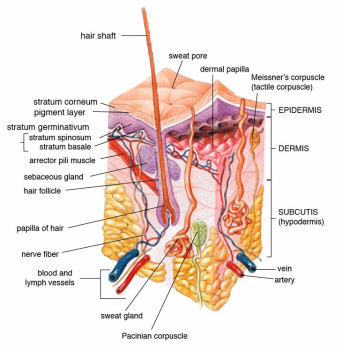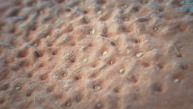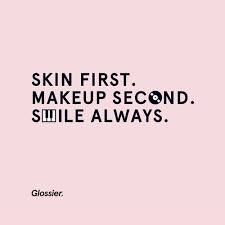A short and sweet summary on what skin is, how pores are made, and what this means for you beauty routine.
You may have brilliant skin knowledge because of your amazing skin care routine that is so well rehearsed and practiced, Dance Mom Abbey Lee sees you as competition – but how well do you REALLY know what your skin is all about, and more importantly, why it may need love and attention?
If you’ve wanted to learn what your skin is and does from a pretty clever perspective then read on!
SO, WHAT IS SKIN?
First fun fact: your skin is an organ. Yup, it’s up there with kidneys, lungs and heart, a body isn’t a body without it. In fact it is the largest and heaviest organ in the body, equating to 16% of a person’s body weight.
It makes sense it is the largest, as skin is a pretty important organ – it keeps bacteria, dirt, and everything not good for your insides, outside. It also works as a thermos-regulator, by controlling your body’s temperature, protecting your heart and lungs from extreme temperatures, and it does a lot of hard work trying to block harmful UV rays. All round, your skin is hard worker and pretty damn important.
 Just like Genie, phenomenal power all in a tiny space
Just like Genie, phenomenal power all in a tiny space
In a single square inch of skin, you’ll find approximately 650 sweat glands, 20 blood vessels and over 1,000 nerve endings, which if you do the math, means you have a whole lot of pieces working within a small space !
On top of that, you’ll find approximately 60,000 melanocytes which are the cells that make melanin and give your skin its color. Low melanin production produces freckles on pale skin, whereas high melanin creates darker and deeper toned skin. Interestingly enough, darker skin tones are common in areas closer to the equator with harsher UV rays, as opposed to fair and freckled faces typically found north of the equator or in colder climates.
Second fun fact: Essentially, the color of your skin is due to evolutionary design and where your ancestors come from!
You’re probably already aware you have several layers of skin, I’m simplifying here, but bear with me:

Photo from Madhero88 & M. Komorniczak
The epidermis is the top layer, that’s the part we see in the mirror
Dermis is the second layer and holds all the important bits that make your skin work
Subcutis is the last layer holding in fatty tissue, safe guarding arteries and venous channels
‘EXCUSE ME, BUT YOUR EPIDERMIS IS SHOWING!’
As the picture (right) shows, there isn’t much in the epidermis – it kinda just sits at the front, acting as a guard providing cover for the dermis, and contains channels for the skin to regulate itself. The epidermis has no blood vessels within, relying heavily on the dermis to send good nutrients and blood its way.
As the front runner in the skin competition, it takes the biggest hit in terms of external damage to the skin (i.e. sunburn, extreme cold, irritation), resulting in a never ending cycle of regeneration by constantly shedding and growing cells. It isn’t the case of a simple ‘out with the old, in with the new’, your skin will actually regenerate new skin cells from within the dermis and diffuse them to the epidermis every 27 days (numerous beauty sites will tell you 20-30 days, but 27 is the most scientifically sound time frame).
BEAUTY TIP: This is why professional skin experts recommend you exfoliate only once a week, too much could potentially remove new baby cells and mess your skin’s natural cycle!
WHAT IN THE DERMIS?
If you had blood vessels in your epidermis, you’d bleed every time you exfoliated, instead they live just under the epidermis, within the dermis and epithelial tissue. If the epidermis is the guard keeper, then the dermis is the treasure room. It holds all the important stuff like the epithelial tissue and all the microscopic things that make your skin work. It’s the important things like hair follicles, sweat glands, sebaceous glands, blood and lymphatic vessels, all living in your dermis that assist with your skin’s constant list of daily tasks like secreting, protecting and sensing!
As the blood vessels stop at the dermis, it has the job of providing blood to the epidermis, by power of diffusion (moving blood cells from a high concentration, to low concentration). The process of diffusion brings blood cells up from the epithelial tissue and spreads them out evenly within the dermis via capillaries. There more red blood cells, the more oxygen in your blood, the more potential action within cell growth – this is why some people (especially during pregnancy) have a gorgeous natural glow; a result from an increased production of red blood cells pumping through their epidermis!
I’VE NEVER EVEN MET A SUBCUTIS
The subcutis is the deepest layer of skin and is not one you see or hear about often – and to be honest, you don’t want to. What I mean by that, is if you can see your subcutis, you need emergency medical attention. The subcutis is formed by subcutaneous tissue and fat that acts as a protective cushion for the large arteries and veins that travel through the body. The subcutis sits over muscular tissues, allowing the vascular system to access all the important and vital body parts. There isn’t many beauty tips on subcutaneous tissue management, but stay tuned for my next blog post for how to manage beauty on a skin deep level!
PORES. WHAT ARE THEY GOOD FOR?
Apparently, a lot.
Pores work as the message carrier between your internal body and your skin, with microscopic hairs in each one designed to detect changes to the outside body.
 A super clever animated close up by Catalin Obreja accordingly.
A super clever animated close up by Catalin Obreja accordingly.
There are approximately 5 million pores on your body; so if you can only see a few on your nose when you put that charcoal mask on, you’re doing well!
Pores are your body’s main data collection and delivery source, this is why some sweat (to cool you down), and some get oily (when you start drying out). The oily substance (sebum) comes from the sebaceous glands, and is often to blame for acne and other ‘bad skin’ conditions, and despite being the bad guy sebum also creates a protective barrier on your skin, locking in moisture, keeping the skin waterproof and keeping bacteria out.
However too much of a good thing can still be bad, an over production of sebum can start to block pores and produce those dreaded ‘blackheads’. ‘Whiteheads’ are pores that are inflamed due to an over production of secretions and are completely blocked, and those painful, annoying, ‘only-shows-up-on-important-days’ red nodules you get under the skin are trapped painful pieces of ooze that are struggling to make it to the outside world.
Read my post on the what and why on acne here
MAKE UP AND PORES
It’s often debated among beauty gurus, with some claiming make up will make your pores worse, while others will state it has nothing to do with anything you put on your face. I’m about to drop a big truth bomb, so I hope you’re sitting down! The truth is:
Both answers are right!

The reality of the situation is clogged pores need to breath naturally and do their own thing, by applying makeup you run the risk of blocking them and causing them to get worse and angrier. The alternative, is you don’t wear makeup, which for many quite frankly isn’t an option, and those with problematic skin may find not wearing makeup does very little to improve the situation.
It is recommended you see which make up is best suited to your skin type (we’ll cover that soon!), find and use a suitable primer to hold pores in place and prevent make up from being absorbed into the skin. However, the best management is as simple as a good face washing routine.
 As per our clever friends from Glossier
As per our clever friends from Glossier
If you check out your favorite beauty gurus on Youtube or Instagram, I could guarantee you some of those guys have toners that cost more than an Armani foundation! That being said, you don’t necessarily need expensive products, besides, it is important to remember what works for you may not work for anyone else! A simple start, is a pH neutral soap and water twice a day, this will work just fine too (results won’t be overnight, but nothing worth it ever is!), but a clean face is a clean face and the best face to start!
Remember, #skinfirst ! You only get one skin, take care of it!
THE CLASSIC ‘I HAVE BAD SKIN’
A common complaint by many people is they have ‘bad skin’; but what exactly makes your skin bad?
Do you have visible pores?
Do you have acne?
Does it dry or irritated?
Does any of this worry you?
It shouldn’t.
Remember every action from your skin is it doing its job ranging from protecting you from harsh elements (skin drying in air conditioning), keep you moisturized (going oily as the day goes on) or blocking out bacteria (acne central).
There is no such thing as bad skin, just skin going out there and doing what skin does best: being an organ. So try not to be so tough on yourself, okay?
IF you want to learn more about skin and the integumentary system in detail check out this wickedly insightful video by KHAN Academy
Thanks for reading, stay shiney!
Alex x
References:
American Academy of Dermatology (2017). The Layers of your skin, from the AAD database
Hulick, K. (2016). Explainer: What is skin? From Science News for Students database
Lewis, V. (2014). The immune system and the skin. Retrieved from thenetdoctor database
Madhero88, Komorniczak, M. (2012). Skin layer [picture]. Wikipedia
Melina, R. (2011). How much does your skin weigh? Retrieved from the Live Science Database
Muehlenbein, M. (2010). Human Evolutionary Biology. Cambridge: Cambridge University Press
Narayan, R. (2014). Integumentary system introduction: Human Anatomy and Physiology , from KHAN ACADEMY
Proksch, E., Brandner, J., and Jensen, J. (2008). The Skin: an indispensable barrier, Experimental Dermatology. 17(12):1063-1072
Wilkinson, P., and Millington, R. (2009). Skin (digital print). Cambridge: Cambridge University Press
Advertisements Share this:





